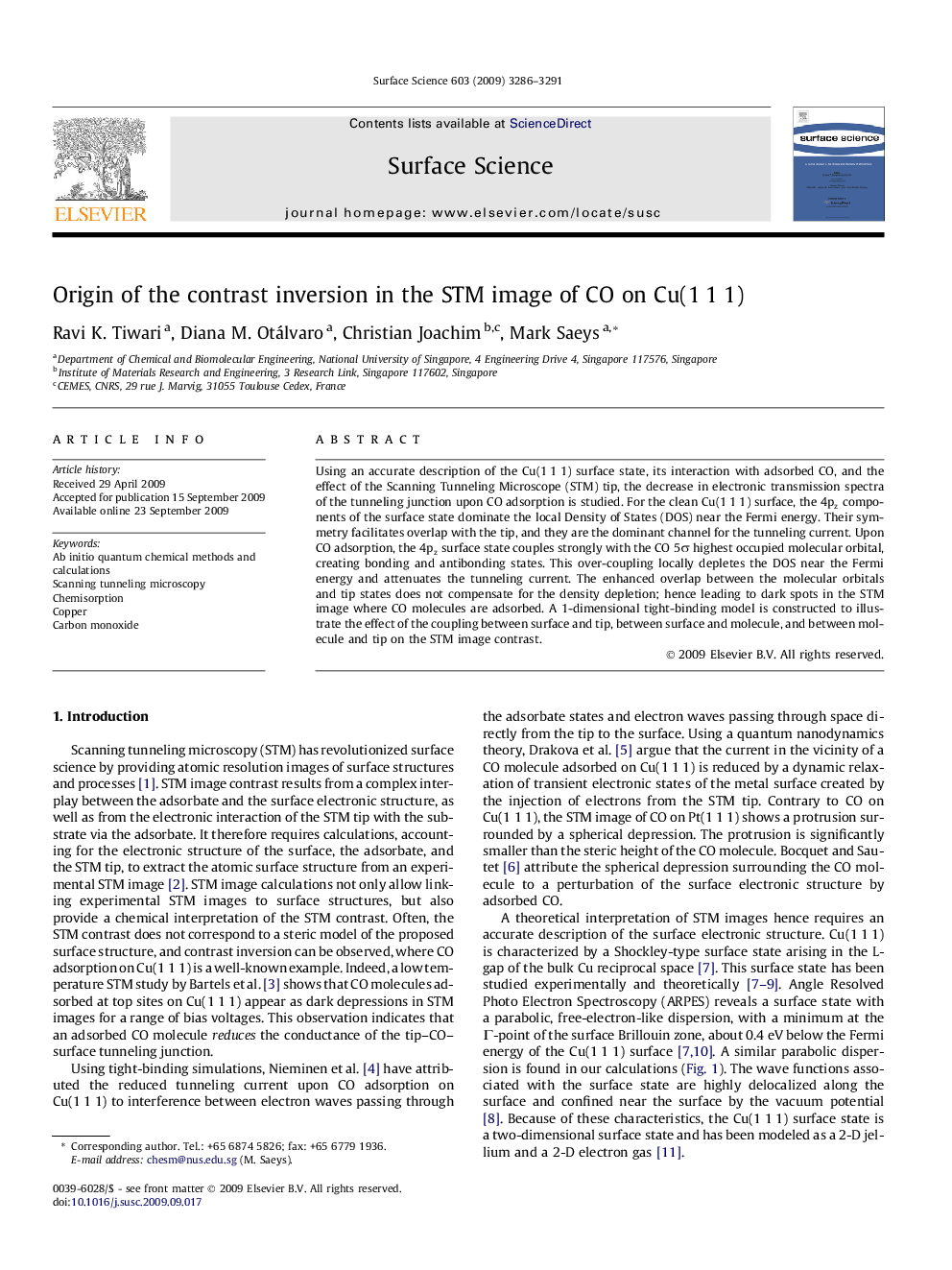| Article ID | Journal | Published Year | Pages | File Type |
|---|---|---|---|---|
| 5423742 | Surface Science | 2009 | 6 Pages |
Abstract
Using an accurate description of the Cu(1Â 1Â 1) surface state, its interaction with adsorbed CO, and the effect of the Scanning Tunneling Microscope (STM) tip, the decrease in electronic transmission spectra of the tunneling junction upon CO adsorption is studied. For the clean Cu(1Â 1Â 1) surface, the 4pz components of the surface state dominate the local Density of States (DOS) near the Fermi energy. Their symmetry facilitates overlap with the tip, and they are the dominant channel for the tunneling current. Upon CO adsorption, the 4pz surface state couples strongly with the CO 5Ï highest occupied molecular orbital, creating bonding and antibonding states. This over-coupling locally depletes the DOS near the Fermi energy and attenuates the tunneling current. The enhanced overlap between the molecular orbitals and tip states does not compensate for the density depletion; hence leading to dark spots in the STM image where CO molecules are adsorbed. A 1-dimensional tight-binding model is constructed to illustrate the effect of the coupling between surface and tip, between surface and molecule, and between molecule and tip on the STM image contrast.
Keywords
Related Topics
Physical Sciences and Engineering
Chemistry
Physical and Theoretical Chemistry
Authors
Ravi K. Tiwari, Diana M. Otálvaro, Christian Joachim, Mark Saeys,
